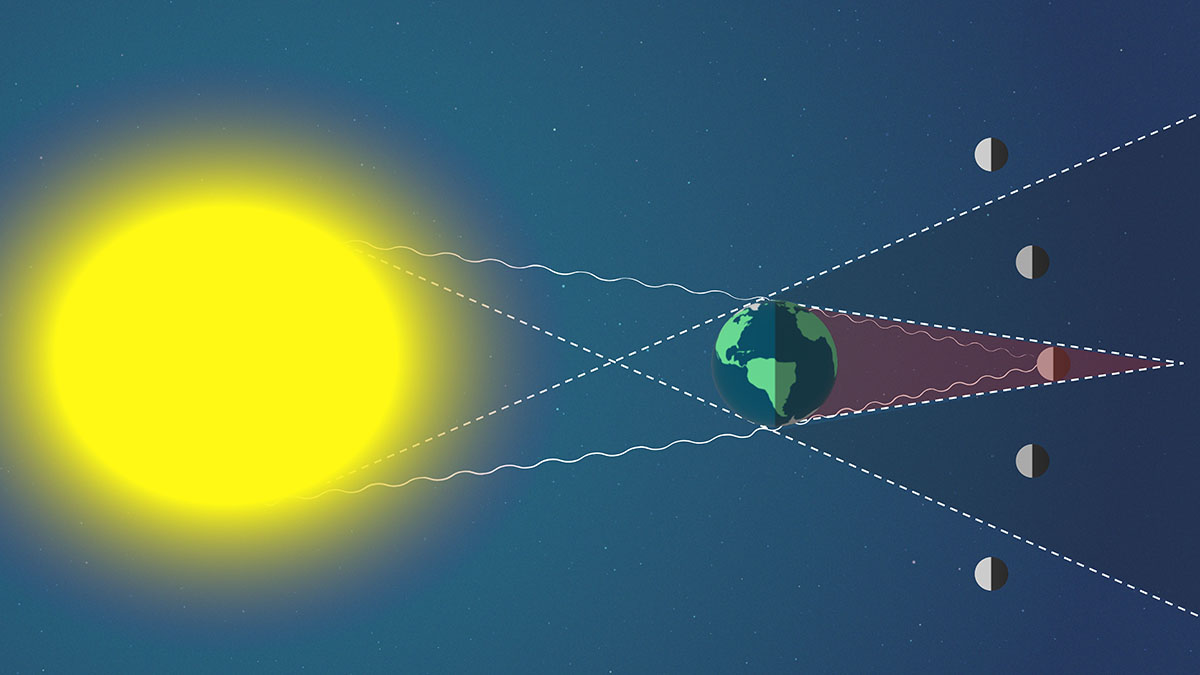When the moon falls completely in Earth’s shadow, a total lunar eclipse occurs. Only light travelling through Earth’s atmosphere, which is bent into the planet’s shadow, is reflected off the moon, giving it a reddish hue. (NASA’s Goddard Space Flight Center/Genna Duberstein)
Home When the moon falls completely in Earth’s shadow, a total lunar eclipse occurs. Only light travelling through Earth’s atmosphere, which is bent into the planet’s shadow, is reflected off the moon, giving it a reddish hue. (NASA’s Goddard Space Flight Center/Genna Duberstein) When the moon falls completely in Earth’s shadow, a total lunar eclipse occurs. Only light travelling through Earth’s atmosphere, which is bent into the planet’s shadow, is reflected off the moon, giving it a reddish hue. (NASA's Goddard Space Flight Center/Genna Duberstein)




